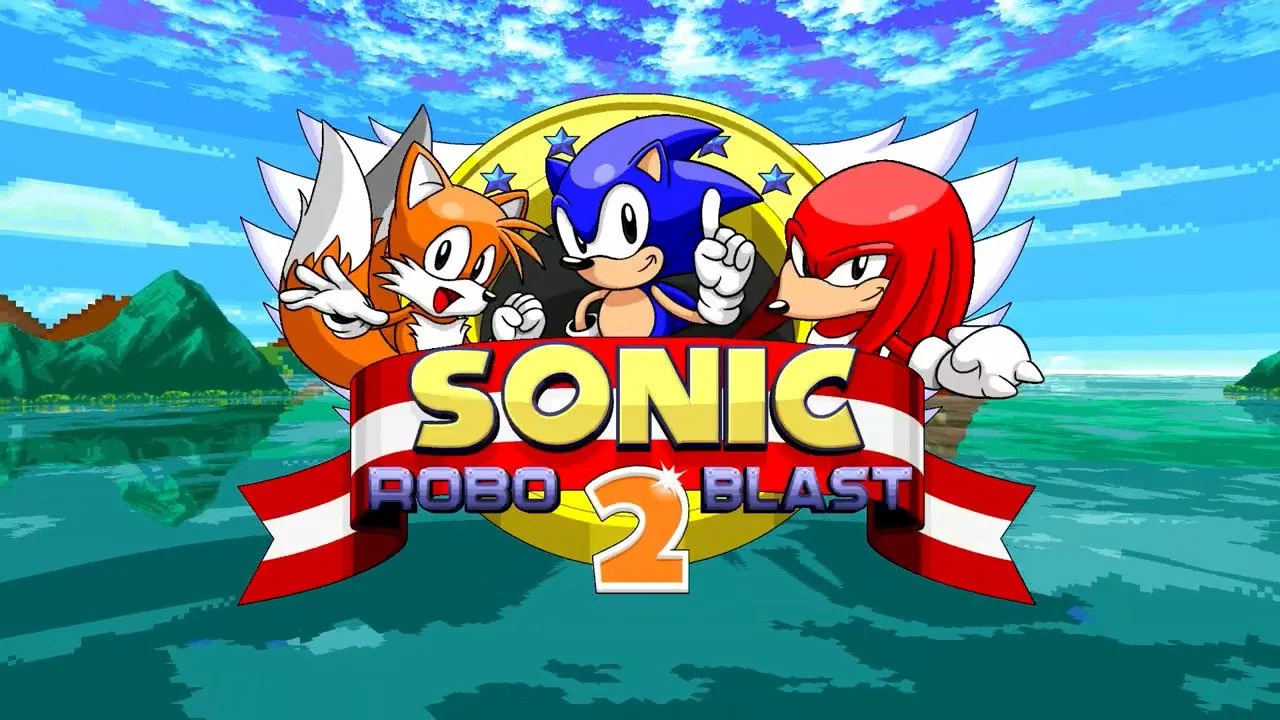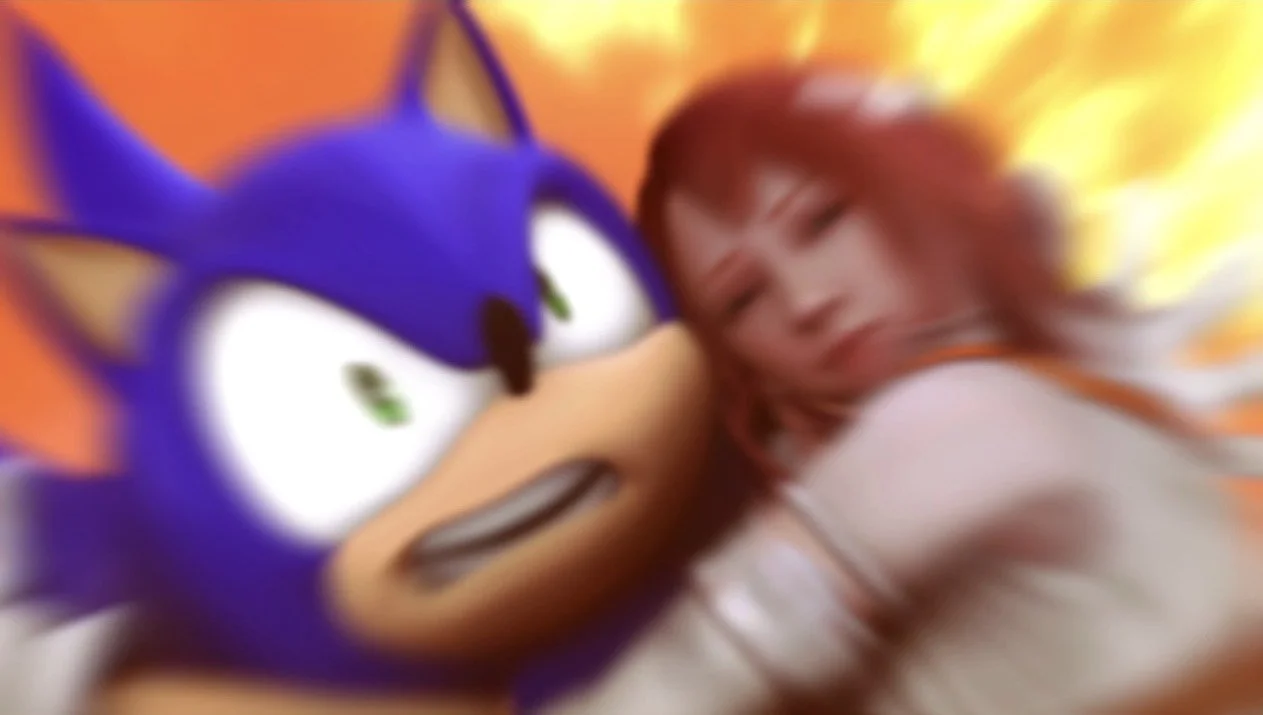sonicmenu | The Architecture Of Sonic Unleashed - And Why It Just Works
Understanding my adoration for Sonic the Hedgehog is a puzzle I’ve not quite yet solved. Despite every word to the contrary from dozens of respectable critics, I keep a spot in my heart for Sonic’s adventures and the off-the-wall scenarios that he finds himself in; whether those scenarios play out as intended or not is another question entirely.
And yet, despite the miasma that surrounds the franchise, certain moments stand out as universal high points that people can point to as the supposed “epitome” of the Sonic formula. For me, those moments lie in Sonic’s clever use of urban landscapes and structures in environmental storytelling, with one particular game in mind.
The foundation for the relationship between Sonic and the urban landscape was established in Sonic Adventure, where the first area of the game exists as a parallel to a human settlement. Station Square is a uniquely non-Sonic space that Sonic and friends inhabit as a part of their lives. Where an opening level like Green Hill Zone manages to establish core mechanics and Sonic’s sense of movement, it can be hard to establish a sense of scale in these particular scenarios. If an area is built with the intention of having Sonic move fast through it, how are we meant to tell that Sonic is actually going fast?
Next time you’re going through a city on a train, you’ll notice just how fast it feels like you’re going as you hurtle past building after building. These buildings take seconds to walk by but less than a second to see fly past your window. Yet, when you’re in a space built for high speed, it doesn’t feel like you’re moving quickly at all. For instance, motorway driving rarely feels like you’re travelling at 70 mph. That’s the same principle with Sonic. Sonic feels faster when he’s going through a space that isn’t built for speed.
Station Square is an ingenious opening area that demonstrates both the movement and scale of Sonic in the third dimension, by equating it with our own understanding. We’re dropped into a familiar city setting and given the freedom to experiment with that before jumping into some more intense and constructed levels, akin to previous 2D games. Each level in Sonic Adventure is totally divorced from the overworld outside of some shared themes, and that works great for the type of game that Sonic Adventure is; with 6 different protagonists, you need to tailor challenges to these specific movesets while making clever use of the assets that you do have.
We can see the same in Sonic Adventure 2 — why do people love City Escape so much? Because we can get an idea for how quickly Sonic is actually moving through this space by relating it to our own idea of a city. It’s a brilliant link that does a good job of bridging the gap between our world and Sonic’s.
This culminates in the level design of Sonic Unleashed, which is almost entirely built around human spaces and urban level design — and is my favourite Sonic game as a result. Each and every main level in Sonic Unleashed is built primarily around a settlement in the country that you’re visiting. You don’t have a designated “grass level”, “sand level”, and “ice level”; you’re running through the streets of a Greek-inspired coastal village, a bustling desert metropolis, and a settlement in the Arctic Circle. Because we understand these settings and the scale of them, this is where Sonic feels his fastest.
I’m also one of the few people who finds themselves actually enjoying the often maligned Werehog segments in Sonic Unleashed. I find them a fun change of pace and I think they fulfil the same function as the Knuckles levels in Sonic Adventure 2. In fact — I think they’re better than those levels. And that comes down to the incredible use of architecture and design, in complement to the daytime levels with normal Sonic.
The dichotomy of hedgehog and werehog means that each location in Sonic Unleashed is fleshed out and feels lived in, far more than any Sonic game before or since. The Werehog trades the traditional speed of Sonic in favour of slower-paced action gameplay with a healthy dose of puzzle-platforming to round out the package, with this platforming having you leap all over people’s houses and on top of rooftops in between combat encounters.
In a roundabout way, you get to experience each city from the perspective of Sonic, and the people who live within it. The Werehog is famously known for its emphasis on combat and platforming, and these challenges give you time to soak in the atmosphere and walk down some of the backstreets that you previously zoomed past during the daytime. As far as I’m concerned, it’s an ingenious twist on the Sonic formula as well as a brilliant way to push people to explore.
That isn’t to say that the daytime stages don’t also have their own moments of exploration; in one of Unleashed’s more divisive decisions, you need to actively stop and search for collectables as a resource for progression. The medal system in Unleashed exists to incentivise replaying stages and have you learn the ins and outs of each locale. In the slower-paced nighttime stages, there’s a synergy between collecting medals and navigation. This synergy isn’t quite there in the daytime stages, thanks to the primary focus on moving forward. Despite this apparent clash, I find myself loving that these side areas were included and thought out in the larger scheme of the geography.
For the people who don’t like this inclusion, I understand. I really do; slowing down during the daytime of Sonic Unleashed feels like a paradox in and of itself. Why should I have to slowly comb through areas when Sonic is supposed to be rocketing towards the goal? The answer is: these places weren’t made for Sonic. None of the main levels in Sonic Unleashed feel like they were created expressly with Sonic in mind, and that’s why they’re so great. Each city you run through is made and designed with humans in mind — with Sonic incidentally finding ways to navigate through them. Obstacles are a result of human architecture, less so the obligation of a level designer putting a spike ball in your path. At least, that’s how it feels. Hostile architecture in cities hasn’t quite reached spike ball level yet — though it feels like it might be getting there.
There are, of course, some significant creative liberties to consider. But suspend your disbelief for just a second — most of the places Sonic runs through in Unleashed are uniquely habited spaces that he’s somewhat intruding on. What better way to show speed than breaking the norm? Sonic exists on the premise of breaking every speed limit in existence — let him actually break them where it counts.
The detail packed into just one stretch of a level in Sonic Unleashed surpasses almost every Sonic game after it, and solidifies Unleashed as still the premier 3D Sonic game in my eyes. And with the reception of the unofficial PC port, I think many others are starting to see the untapped potential that Unleashed possesses, helped by some very nice optimisation efforts and quality-of-life extras.
There’s a reason why a team of dedicated fans were determined to bring the daytime Unleashed stages to Sonic Generations, and there’s a reason why many agree that these levels are the pinnacle of modern Sonic design. Sonic Colors, Generations, Lost World, Forces, and Frontiers never quite managed to strike that balance, despite coming out far later than Unleashed did. You run through areas, you might even learn their layouts, but they’re just levels. They aren’t habitable spaces. Lived-in environments are something that even Sonic 06 has done better than these games in particular.
Can you seriously see Windy Hill from Lost World being a real place?
Frontiers is the closest we’ve gotten, but even that falls victim to the common problem of making areas feel like an artificial obstacle course rather than integrating obstacles into the environment as part of a greater history. It’s all well and good having fun obstacles, but I want to feel a sense of satisfaction from navigating them.
In an era where it feels like Sega is starting to actually understand how to make a good Sonic game, I hope this is something they return to in the future. Shadow Generations demonstrates that you can make something good out of even the most milquetoast games (Sonic Forces, looking at you), but I want them to really lean into the urban again. Why must our hedgehog friend be bound to sterile corridor level design?
Isekai Sonic if you must — just let him run through the streets.









